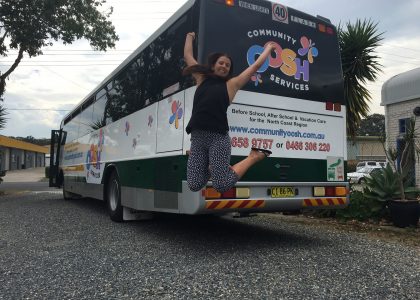Transporting children with food allergies: ensuring safety, consistency and trust

In early childhood services that provide transport whether for excursions, field trips or daily pick-ups and drop-offs managing food allergies becomes an added responsibility. When children with known allergies board vehicles outside the controlled environment of the centre, risk increases and vigilance must rise.
Here’s how early learning services can adopt a robust, child‑safe approach to transporting children with food allergies protecting health and meeting legislative requirements.
Why this matters
- Heightened risk during transport: In a moving vehicle, supervision is more challenging, space is constrained, and access to emergency equipment (e.g. epinephrine, antihistamines) may be delayed.
- Accountability under regulatory and duty of care obligations: Services remain responsible for children’s health and safety during all service operations, including off-site transport.
- Trust and reputation: Families entrust services with vulnerable children. Demonstrating consistent, transparent allergy management reinforces confidence.
- Continuity of care: Children with allergies should receive the same level of safety whether inside or outside the centre.
Core principles for safe transport with known allergies
- Risk assessment & planning before each trip
- Identify children with documented food allergies and severity (e.g. anaphylaxis risk).
- Consider route, duration, access to medical support, stop points, communication signal, etc.
- Determine whether the trip is suitable given allergy risk, or whether extra staff or supports are needed.
- Plan seating arrangements, separation zones or buffer zones if allergenic foods are present.
- Clear policy and procedure alignment
- Ensure transport policies explicitly address children with medical conditions, including food allergies.
- Integrate allergy‑transport procedures with existing policies (medical conditions, excursions, risk management).
- Define roles and responsibilities (driver, supervising educator, first‑aid response) during transport.
- Medication and emergency readiness
- Carry a child’s individual medical management plan, consent, and emergency action plan (e.g. auto‑injector instructions).
- Ensure epinephrine auto‑injectors, antihistamines, and first aid supplies are accessible, clearly labelled and staff know their location.
- Train staff on recognising symptoms of allergic reaction in a moving vehicle and on prompt response protocols (stop vehicle, seating, call emergency services).
- Communication and consent
- Obtain parental consent specific to transport for children with allergies, including information about snack or food policies during transit.
- Share trip-specific guidance with parents (e.g. whether children should avoid bringing snacks, whether the service will supply allergen‑safe snacks).
- Brief all staff involved (drivers, assistants, educators) about child allergy profiles, plans, and triggers, prior to departure.
- Environment and behaviour management in transit
- Enforce a no‑eating rule in the vehicle when risk is high (or limit to known safe foods, if essential).
- Ensure hand hygiene before and after boarding, and carry wipes or sanitiser.
- Avoid cross-contamination by cleaning surfaces, seat belts, trays or shared areas.
- Seat children with allergies away from others who may carry allergenic residues (e.g. food in hands).
- If food is essential during travel, provide only pre‑approved allergen‑safe options, in consultation with families and medical plans.
- Ongoing reflection and review
- Document any incidents, near misses or deviations from plan.
- Debrief staff post-trip to identify what worked, what didn’t, and opportunities to improve.
- Revisit routes, timings or staffing if patterns of risk are emerging.
- Update policies, training and staff orientation to reflect lessons learned.
Leadership & governance considerations
- Policy oversight: Boards or governance committees should review and endorse transport/allergy protocols, ensuring resourcing and accountability.
- Staff recruitment, training and induction: Ensure that any staff assigned to transport roles understand allergy protocols as part of induction and performance.
- Insurance & legal compliance: Confirm that transport and medical protocols align with liability, insurance and regulatory frameworks.
- Family partnership: Engage families in co‑designing transport safety plans and clarify expectations around food, communication and emergency procedures.
- Continuous improvement: Use incident data, audits, feedback and regulatory updates to evolve procedures.
A commitment to consistency, inclusion and child safety
Transport is often seen as a logistical add-on in the ECEC landscape but for children with food allergies, it is a moment of vulnerability. By embedding rigorous, transparent processes and fostering educator competence, services can ensure safety is more than aspirational.
In doing so, early learning services not only comply with duty of care and regulatory expectations but affirm a deeper commitment: that every child, whether in the classroom or on the bus, deserves equal protection, dignity and respect.
Access further information on ACECQA’s website.
Popular

Quality
Practice
Research
Early help, lasting impact: the success of a Specialist Equipment Loan
2025-11-25 07:30:39
by Fiona Alston

Research
Landmark report warns wellbeing of Australian children at a crossroads
2025-11-25 07:00:53
by Fiona Alston

Quality
Policy
Practice
Provider
Research
EYS program delivers strong outcomes, but long-term funding remains critical
2025-11-25 07:45:35
by Fiona Alston















